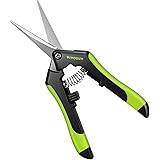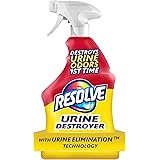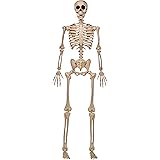Bringing a new puppy into your home is an incredibly joyful experience, filled with adorable cuddles and endless laughter. However, that joy can quickly turn into frustration when your sweet little companion starts to exhibit persistent puppy nipping and biting. Many new puppy owners find themselves battling these sharp little teeth, often feeling at a loss for how to manage the behavior effectively. The good news is that much of this unwanted puppy biting can be corrected, and you can play a pivotal role in resolving it.
The truth is, while puppies naturally explore with their mouths, many owners unknowingly engage in habits that actually encourage the very nipping they want to stop. As Kayl McCann expertly explains in the video above, recognizing these common mistakes is the first step toward teaching your puppy better manners. This article will delve deeper into the strategies discussed, offering expanded insights and practical tips to help you stop puppy nipping and foster a calmer, more respectful relationship with your furry friend. With consistent effort and the right approach, you can guide your puppy towards appropriate behavior.
Cultivating Calm: The Impact of Your Tone of Voice on Puppy Biting
One of the most immediate and often overlooked factors influencing puppy nipping is the tone of voice we use when interacting with them. It’s natural to use a high-pitched, excited voice when greeting a cute puppy, but this can inadvertently ramp up their energy levels, making them more prone to wild play and subsequent biting. A puppy’s world is full of sensory input, and your voice carries significant weight in shaping their responses. Consequently, maintaining a calm and even tone becomes paramount in promoting a settled demeanor.
Furthermore, when a puppy nips, many owners instinctively exclaim “No!” or shriek in surprise. While understandable, this reaction is often counterproductive. Puppies don’t inherently understand the word “no,” and a sharp, high-pitched vocalization might even sound like an invitation to play or become even more agitated. Instead, adopting a calm, assertive tone, perhaps with a specific, unique word like “Settle” or “Easy,” helps your puppy understand that the current behavior is undesirable without escalating their excitement. This teaches them to associate specific sounds with clear boundaries, fostering a more conducive learning environment. Additionally, consistency with this calm vocal approach across all family members reinforces the desired behavior effectively.
Choosing Your Words Wisely: Beyond the Universal “No”
Moving beyond the high-pitched “no,” the specific words you choose to address unwanted puppy biting are also crucial for clear communication. Since “no” is used so frequently in human interactions, it often loses its impact or becomes too generalized for a puppy to truly understand in a specific context. Instead of a blanket prohibition, consider introducing a unique, distinct verbal cue specifically reserved for moments when your puppy makes a mistake, especially during nipping incidents.
This chosen word could be a low, guttural “aah” sound, or a phrase such as “Knock it off,” “Cut it out,” or “That’s enough.” The key is that this word or sound should be used *only* for the puppy and *only* when they are doing something inappropriate, creating a clear and unmistakable signal. This precision in communication helps your puppy quickly differentiate between acceptable and unacceptable actions. Once the cue is delivered, it must be consistently followed by appropriate discipline, which in positive reinforcement training means redirecting their behavior or briefly removing the reward (like stopping play). This consistent pairing solidifies the meaning of your chosen word, making it an invaluable tool for preventing future puppy nipping.
The Art of Puppy Handling: Preventing Nipping Through Touch
Effective puppy handling is a cornerstone of preventing puppy nipping and fostering a trusting relationship, yet it is an area where many new owners inadvertently make mistakes. It is common for people to want to vigorously pet, pat, or even grab their puppy’s paws and ears in a way that can feel invasive or startling to the young dog. This can easily provoke nipping as the puppy reacts defensively or sees it as an invitation to a rough play session, rather than a gentle interaction.
Instead, consider introducing handling in a controlled and positive manner from the very beginning. For instance, while your puppy is focused on licking a treat from your hand or a treat dispenser, you can gently hold their paw, touch their ears, or briefly examine their mouth. This positive association, where handling equals delicious rewards, teaches them to remain calm and accepting of touch. As the puppy becomes more comfortable, the reliance on treats can gradually decrease, replaced by praise and a strong foundation of trust. By consciously teaching your puppy to behave calmly during handling, you not only prevent nipping but also prepare them for future veterinary visits and grooming sessions, making these experiences far less stressful for everyone involved.
Avoiding Rough Play and High-Risk Situations
Many owners delight in getting down on the floor to wrestle and roughhouse with their puppies, treating them like tiny littermates. While this might seem like harmless fun, especially for a playful puppy, it can send mixed messages to a young dog that is still learning bite inhibition. When you engage in this kind of play, you are essentially mimicking the way puppies play with their siblings, which often involves lots of nipping and mock fighting. This directly undermines any efforts you’re making to prevent puppy biting at other times, creating confusion and slowing down their learning process.
Furthermore, certain situations inherently increase the likelihood of puppy nipping. Holding a young puppy up near your face, allowing them to jump on elevated surfaces like couches or beds near your head, or letting them get overly excited in these close proximity situations, creates an easy opportunity for them to make a mistake. A playful nip at your nose or ear might seem accidental, but it reinforces the behavior. Until your puppy has developed solid bite inhibition and understands clear boundaries, it is much safer to interact with them in a more controlled manner, keeping them at a respectful distance from your face, especially when their energy is high. Creating these boundaries proactively helps the puppy learn appropriate interaction much faster, reducing the instances of accidental nips and building a foundation for more controlled play later on.
The Cornerstone of Canine Learning: Rules and Household Consistency
Dogs and puppies thrive on predictability and crave consistency in their environment and training. This fundamental need often becomes a significant challenge in multi-person households where different family members might have varying approaches to puppy training and behavior expectations. For example, if one person is diligently working to stop puppy nipping and enforces strict rules against rough play, while another family member (perhaps a child or partner) comes home and immediately engages in wrestling, the puppy receives conflicting signals. This gray area confuses the puppy, making it incredibly difficult for them to discern what is acceptable and what is not.
During the critical developmental period of puppyhood, which is arguably the most impressionable time, it is vital that everyone in the household is united in their approach. This means sitting down as a family to discuss and agree upon a consistent set of rules regarding puppy interactions, especially concerning nipping and biting. Whether it’s the specific cue word to use, the types of play that are allowed, or the boundaries around handling, everyone must be on the same page and follow through consistently. This unified front ensures that the puppy receives clear, unambiguous messages, accelerating their learning and ultimately making the training process much smoother and more effective for everyone involved. Without this consistency, even the most dedicated individual training efforts can be undermined, prolonging the battle against unwanted behaviors.
Essential Tools for Effective Puppy Training and Control
Just as a carpenter needs the right tools for a project, effective puppy training, particularly when addressing nipping and biting, benefits immensely from a few key items. These tools are not just accessories; they are instrumental in establishing control, promoting positive behaviors, and making your training sessions more efficient and less frustrating. Among the most valuable assets for managing a young, energetic puppy are a house line, a treat pouch, and a well-chosen tug toy. Utilizing these tools strategically allows you to proactively manage situations that might otherwise escalate into unwanted nipping.
The Indispensable House Line: Gaining Control and Preventing Mistakes
One of the biggest hurdles in managing a rambunctious puppy is simply getting a hold of them when they’re misbehaving. This is where a house line becomes an absolute game-changer for puppy biting problems. Unlike a regular leash, a house line is a lightweight, handle-free cord typically left on the puppy while they are supervised indoors. Its primary purpose is to give you immediate, gentle control without having to chase your puppy, which can inadvertently turn into a game or diminish your perceived leadership.
Imagine your puppy grabbing your slipper or nipping at your trousers as you walk by. Instead of bending down and potentially provoking more nipping, you can simply step on the house line to calmly interrupt the behavior. This allows you to regain control, redirect their attention, or guide them into a different position without physical struggle. The house line is also invaluable for preventing escalation in high-energy moments, enabling you to guide your puppy away from temptation or to a settling spot. This simple tool empowers you to prevent many problems before they fester, making it easier to teach good habits and prevent puppy biting effectively.
Mastering Play: Using Tug Toys for Leadership and Bite Inhibition
There are often two contrasting views on using tug toys with puppies, especially those prone to nipping. Some believe giving a puppy a toy when they nip redirects the behavior, while others fear it encourages more aggressive play. In reality, a tug toy, when used correctly, can be a powerful tool for teaching bite inhibition and establishing leadership, rather than an instant fix or a cause for concern. The key lies in strategic timing and clear rules for engagement during play. When you play tug, you’re not just having fun; you’re teaching your puppy how to control their mouth, understand boundaries, and respect your signals.
To use a tug toy effectively for preventing puppy biting, initiate play with a controlled start, requiring the puppy to be calm before engaging. Always keep your hands away from the puppy’s mouth, holding the toy firmly, and teach them that if their teeth accidentally touch your skin, the game immediately stops. This instant consequence teaches them that “biting skin means play stops,” a crucial lesson in bite inhibition. Furthermore, incorporate an “out” or “drop it” command by trading the toy for a high-value treat. This teaches your puppy to willingly release items on command, reinforcing your leadership and control over valuable resources. By engaging in structured tug play, you transform a potentially chaotic activity into a valuable training opportunity, channel their natural desire to bite into an acceptable outlet, and simultaneously build a stronger bond based on mutual understanding and respect, all while teaching them to use their mouth politely.









